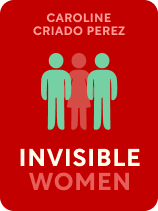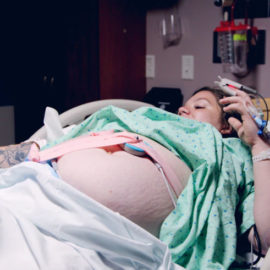

This article is an excerpt from the Shortform book guide to "Invisible Women" by Caroline Criado Perez. Shortform has the world's best summaries and analyses of books you should be reading.
Like this article? Sign up for a free trial here .
What is Invisible Women by Caroline Criado Perez about? What should you take away from the book?
In Invisible Women, Caroline Criado Perez explains that most humans operate on a male-as-default mindset. This mindset leads to and is reinforced by a gender data gap—a lack of information about the female experience—that ultimately harms women’s health, safety, and economic standing.
Keep reading for a brief overview of Invisible Women.
Invisible Women by Caroline Criado Perez
In Invisible Women, Caroline Criado Perez contends that this male-as-default mindset causes a gender data gap—a lack of information about the female experience—that harms women’s health, safety, and economic standing. This is because we don’t consider women the “average person,” so we don’t collect data on them.
(Shortform note: Although Perez didn’t coin the term “gender data gap,” data suggests that she did introduce it to the public consciousness. Google searches for “gender data gap” remained relatively low for years but spiked in February 2019 and have remained relatively high since then. Given that Invisible Women was published in March 2019 and started to release preview chapters shortly before that, this spike appears to be related to the book’s popularity—especially since the top related queries to the term include both the author and the book’s name.)
In turn, this gender data gap reinforces the male-as-default mindset. When there is no data about women, people (especially men) assume that the experience of the average man represents the experience of the average woman, so they continue to make choices that reflect this mindset—but ultimately harm women. In this way, the male-as-default mindset and the gender data gap create a vicious, mutually reinforcing cycle.
The Gender Data Gap Harms Women’s Health
According to Perez, our male-as-default mindset results in a gender data gap that harms women’s health. Perez discusses how this manifests in everyday products—namely cars—and in our healthcare system—namely medicines.
The Gender Data Gap Affects Women’s Economic Standing
Perez asserts that the gender data gap, in addition to harming women’s health, also harms women’s economic standing. Perez talks about how our male-as-default mindset causes a gender data gap by leading us to not collect data separately on men and women—a failure that ultimately results in discriminatory systems that harm women’s finances. Then, talks about how the gender data gap contributes to a male-as-default mindset that ultimately results in workplaces that don’t consider women’s needs and thus harm their ability to succeed.
The Gender Data Gap Affects Women’s Safety
How does the gender data gap reinforce the male-as-default mindset? Perez writes that we can see this in the failure of society to sufficiently protect women’s safety in both daily life and in our responses to disasters.

———End of Preview———
Like what you just read? Read the rest of the world's best book summary and analysis of Caroline Criado Perez's "Invisible Women" at Shortform .
Here's what you'll find in our full Invisible Women summary :
- How society's male-as-default mindset leads to a gender data gap
- Why cars don't properly protect women during accidents
- Why we don’t know how most medicines affect women






